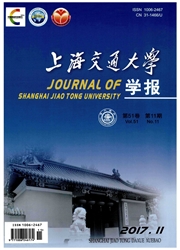

 中文摘要:
中文摘要:
为了解人体上肢的运动学属性和操作能力,结合上肢解剖结构分析和国际生物力学学会提出的上肢运动描述方法,建立了人体右侧上肢的运动学模型.该模型包含了胸锁关节、盂肱关节和肘关节的运动,并将肩锁关节与肩胛胸壁关节的运动等效为上肢带骨运动.根据人体上肢关节的运动耦合关系推导了上肢关节与腕点间的速度雅克比矩阵,并对人体右上肢在冠状面、矢状面和水平面内的运动灵活性进行了分析.结果表明:影响腕点运动的独立关节参数少于上肢自然运动轴的数目,对应于上肢抬升角取值域的变化,雅克比矩阵有3种不同的结构形式;上肢在冠状面、矢状面和水平面内运动时,伸展位形区域的指标值小于屈曲位形区域的指标值,在屈曲位形区域人体上肢具有更好的运动灵活性.
 英文摘要:
英文摘要:
In order to understand the kinematic characteristics and manipulation ability of human upper limb, a kinematic model of the right upper limb was built according to limb's anatomical structure analysis and upper limb motion description method proposed by the International Society of Biomechanics. In this model, the motions of sternoclavicular joint, glenohumeral joint as well as elbow joint were involved, and the motions of acromioclavicular joint and scapulothoraci joint were equivalently replaced by the motion of shoulder gridle. Based on the motion coupling of upper limb joints, the Jacobian matrix describing the velocity relationship between limb joints and limb wrist point was derived, and the kinematic dexterity of the right upper limb moving in coronal plane, sagittal plane and horizontal plane were analyzed. The results show that the number of independent joint parameters which impact wrist point movement is less than that of the natural axes of the upper limb, and the velocity Jacobian matrix has three different structures corresponding to the value region changing of elevation angle; When the upper limb moves in these three special planes, the dexterity index values of extension configurations of the upper limb are smaller than those of inflexion configurations, and human upper limb obtains better kinematic dexterity.
 同期刊论文项目
同期刊论文项目
 同项目期刊论文
同项目期刊论文
 期刊信息
期刊信息
